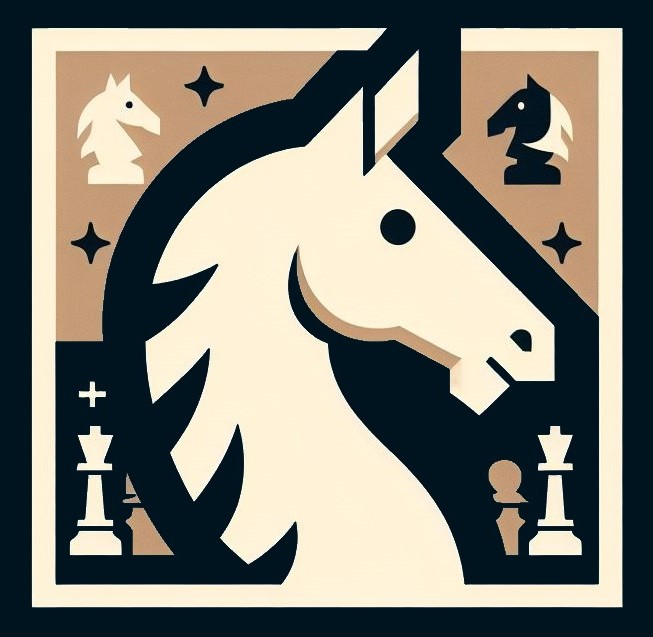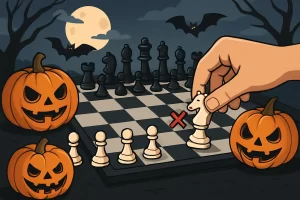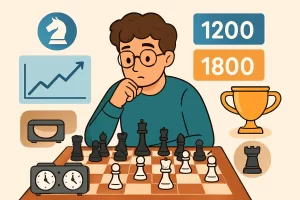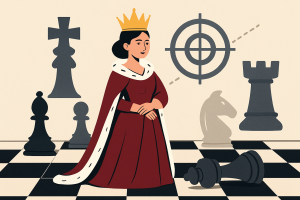Call us now:
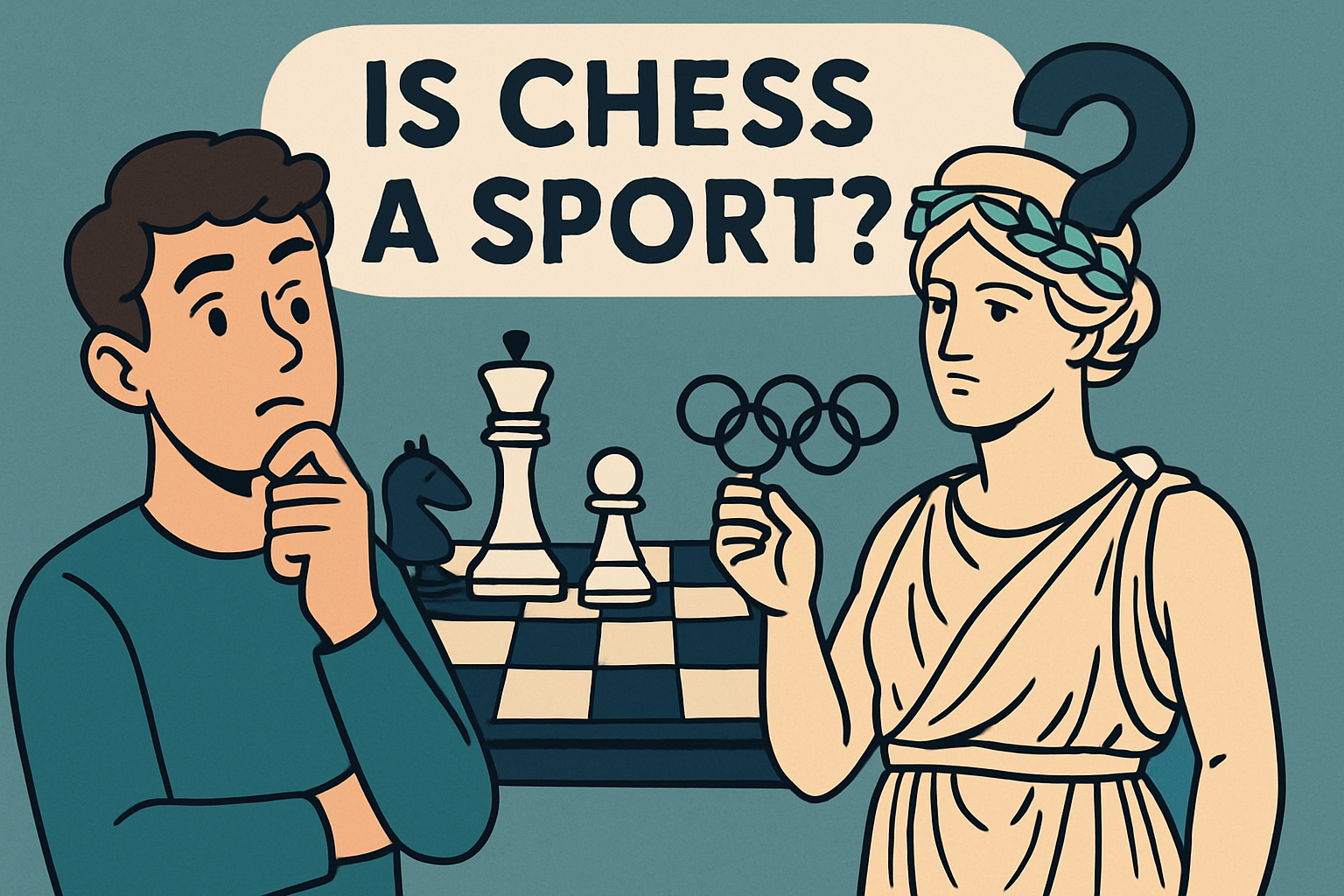
Why this debate refuses to die
Chess has always sat in a captivating tension between art, science, and sport. Spend a week behind the ropes at a super-tournament and you’ll see why. Grandmasters arrive with coaches, seconds, nutrition plans, heart-rate wearables, hydration schedules, and even physiotherapists. They pace the hall like boxers on the move, heart rates spiking as time trouble approaches, faces flushed, hands trembling as they calculate across a dozen tricky branches. The exertion isn’t theatrical; it’s trackable—on heart monitors, on scales at weigh-ins, and sometimes under WADA’s watchful eye. And yet, nobody is sprinting or deadlifting.
The real question isn’t whether chess involves physical work. It does, and the data is stronger than most people realize. The question is whether that work, paired with codified competition, governance, and training culture, meets our best definition of “sport.” Here’s the expert view, grounded in what the IOC and FIDE say, and in what science has finally measured.
What defines a sport—and where chess fits
When you strip away nostalgia and tribal preferences, authoritative definitions of sport converge on a core set of criteria:
- It is competitive, outcomes determined by skill under codified rules.
- It is organized, with event structures, governance, and adjudication.
- It carries a physical or physiological component beyond pure chance or trivia.
- It cultivates performance through training and preparation.
- It permits standard oversight, including fair-play and anti-doping measures where applicable.
Chess checks these boxes. It is contested under a single Laws of Chess rulebook, administered worldwide by FIDE, with rating systems, title norms, world championships, and team internationals akin to any global sport. It carries anti-doping controls under the World Anti-Doping Agency code at designated events. And it imposes measurable physiological strain at elite levels.
The physical element is the sticking point for most skeptics. If “sport” required overt gross motor output—sprinting, jumping, swinging—then shooting and archery would also be excluded. Instead, modern sport science accepts that fine-motor and autonomic regulation (heart rate, blood pressure, hormonal stress) can carry real physical load under certain competitive contexts. On that spectrum, chess sits closer to shooting and eSports than to soccer, but squarely within a recognized category: the mind sport.
Snapshot comparison: do sport criteria apply to chess?
| Sport Criterion | Chess Evidence in Practice |
|---|---|
| Competition under codified rules | FIDE Laws of Chess; rating systems; titles; contractual match regulations |
| Recognized governing body | FIDE is recognized by the IOC; affiliated national federations administer the sport |
| Physical/physiological component | Elevated heart rate, heart rate variability shifts, cortisol spikes, significant caloric burn |
| Training and performance development | Daily prep with opening repertoires, calculation drills, physical conditioning, nutrition plans |
| Anti-doping/fair play infrastructure | WADA-compliant anti-doping controls at designated events; testing protocols; TUE mechanisms |
IOC recognition versus the Olympic program
This is the most common source of confusion. The IOC recognizes international federations and their sports. That recognition signals that an activity meets the IOC’s criteria regarding governance, ethics, accessibility, and alignment with the Olympic Charter. Recognition isn’t the same as being included on the Olympic medal program.
Chess has IOC recognition in the sense that FIDE is accepted within the Olympic family. This allows FIDE to participate in parts of the Olympic Movement, including compliance with WADA and certain governance standards. But being on the Olympic program requires additional steps: quota considerations, broadcast appeal, gender equity metrics, infrastructure, and the complex politics of adding events without inflating the Games. Chess is not currently a medal event at the Summer or Winter Olympics.
There have been periodic exhibitions, cultural activations, and flirtations with multisport events linked to the Olympic ecosystem. There is also a separate platform—International Mind Sports Association events—where chess stands alongside bridge, go, and others. That ecology supports chess’s sport status without implying Olympic medals.
Mind sport: what the classification really means
“Mind sport” isn’t a euphemism for “not a sport.” It’s a meaningful category that acknowledges:
- Skill expression is cognitive-first: calculation, memory, pattern recognition, decision speed.
- Physical load is mediated by the autonomic nervous system: stress response, heart rate dynamics, muscular tension from posture and fine-motor control.
- Competition is formalized: international events, national teams, world championships, anti-doping oversight.
Chess sits at the head of that table, with go and bridge close by, and with eSports increasingly merging the line as reaction-time and motor coordination elements become central to competitive play.
What science says about the physiology of top-level chess
For a long time, claims about chess and energy expenditure were passed around like folklore. Then teams began to measure. Heart-rate monitors and HRV trackers came into elite halls. Wearables became discreetly common under crisp blazer sleeves. Blood salivary cortisol tests appeared in a few research projects. The picture that emerged matches what players and coaches have felt on the floor for years.
- Heart rate and HRV: Strong increases in heart rate are typical during severe time trouble, tiebreaks, and long calculation phases. Resting heart rates in calm positions can sit in the 60–80 bpm range; during critical moments, spikes to 120–160 are not uncommon among elite players. Heart rate variability—the micro-interval fluctuation between beats—often drops as stress focuses attention, then rebounds post-game if recovery protocols are sound. These patterns mirror precision sports under pressure, like shooting finals.
- Calorie expenditure: Energy burn varies widely by body size, fidgeting/pacing behavior, stress level, and game length. Realistic daylong totals at elite events frequently exceed baseline sedentary expenditure by several hundred calories. Multiple case reports from closed camps, combined with observational data presented by team nutritionists, show energy deficits accumulating across multi-day tournaments. Weight loss over a grueling event is a known risk for some players, and teams plan refeeding days and hydration strategies accordingly.
- Hormonal and metabolic markers: Salivary cortisol measurements from controlled studies and team tracking show acute spikes during competitive rounds, especially in high-stakes games and rapid/blitz formats where reaction pressure is extreme. Elevated cortisol mobilizes glucose, increases blood pressure, and can alter memory consolidation—beautifully adaptive in short bursts, costly if poorly managed across a long event. Glucose monitoring among a few players has also revealed dips during long rounds without adequate fueling.
- Musculoskeletal load: The physical image of chess is static, but the reality involves repeated isometric tension: neck and upper back muscles holding postures, forearms subtly tensing for hours, hands and fingers gripping and moving pieces, and lower back supporting a forward-leaning torso. Without mobility work, these loads accumulate into tendon irritation and tension headaches. Several teams now employ physios to prehab shoulders and necks the way a violinist does before a concert.
Are these physiological responses “enough” to call it a sport? If shooting and archery clear the bar—sports whose physical intensity centers on controlling the autonomic system under pressure—chess does too. The body is constantly riding the rhythm of the position.
Anti-doping in chess: what, when, and how
Because chess is recognized within the Olympic family, FIDE adheres to the World Anti-Doping Code. In practice, that means:
- The WADA Prohibited List applies to chess in-competition at designated events. The list includes stimulants (such as amphetamine-class substances), narcotics, and other performance-affecting categories during competition periods. Substances like modafinil have been debated in mind sports for their potential to enhance wakefulness and sustained attention; they sit within WADA’s framework.
- Therapeutic Use Exemptions (TUEs) exist for legitimately prescribed medications, including common ADHD treatments, asthma medications, and others. Players should apply in advance for events with testing. Team physicians and federation doctors often handle this paperwork.
- Where and when testing occurs: Testing tends to occur at top events—world championships, team Olympiads, continental championships, and selected national events. Protocols are randomized or targeted and follow standard chain-of-custody rules. In-competition windows are defined by the event schedule.
- Violations are rare but real: Chess has seen isolated anti-doping rule violations over time, almost always involving in-competition stimulant positives or paperwork failures. Suspensions have been imposed in keeping with the code. Because the aim in chess is cognitive endurance more than anaerobic output, the substances of interest skew toward stimulants rather than anabolic agents.
- Anti-doping vs anti-cheating: These are distinct. Anti-doping is a medical and legal process aligned with WADA. Anti-cheating deals with electronic assistance and fair play. Both fall under FIDE’s governance, but they are different toolkits and violation pathways.
Here’s the practical takeaway for competitors: keep your medication list documented, get your TUEs in order before events with testing, and remember that supplements can be contaminated—elite teams use batch-tested products to reduce risk.
Inside the training rooms: how elite grandmasters prepare their bodies
Talk to a modern second or performance coach on a top team and you’ll hear a surprising sentence: “We don’t leave rating points on the table because of physiology.” The margins are that small. When positions are equal by machine evaluation, tempo and energy management creates the difference.
What does that look like?
- Aerobic base: Many top grandmasters structure three to five sessions per week of steady-state cardio—running, cycling, rowing, or brisk walking. The goal is robust parasympathetic tone and faster post-stress recovery, not marathon heroics. Better HRV equals clearer thinking under pressure.
- Strength and mobility: Short, consistent strength blocks for posterior chain, core, and scapular stability prevent the postural collapse that leads to headaches and shoulder pain during long rounds. Mobility protocols target thoracic spine rotation, hip flexor relief, and neck glides.
- Nutrition for long rounds: Most teams work from a template: low-glycemic carbohydrates leading to the round, steady intake during play—banana halves, apples, nuts, dark chocolate squares, low-sugar electrolyte fluids—and protein plus complex carbs post-round to recover. Caffeine is periodized: modest dosing before a round, no frantic sipping late in time trouble to avoid tremor.
- Sleep protection: Blue-light filters, meal timing, breathing drills, and occasionally guided relaxation help players hit the pillow even after a night round. One performance coach I spoke with keeps a strict “no engine after the final move” rule, forcing a wind-down rather than ruminating with Stockfish until dawn.
- Tournament-week scheduling: Travel arrives early to avoid circadian drag. Prep is front-loaded before round one, then tapered. Rest days are real rest: light cardio, sauna or contrast showers, mental spring cleaning of the opening file and not much else.
The best players quietly built these routines years ago. It’s no accident that top standings often correlate with squads that look more like small F1 teams than solo hobbyists. In an era where prep engines make miracles available to everyone, the human edge is conditioning.
Arguments against calling chess a sport—and how they land
Purists who resist the label typically reach for three claims:
- There’s no significant physical component. The counter is evident: measurable physiological load occurs and affects performance—heart rate spikes, cortisol surges, energy deficits, and muscular tension are not metaphors. They’re data.
- It’s fundamentally a game, like poker or bridge. True, and many sports are games. “Game” describes the format; “sport” describes the category of organized physical competition. Shooting is a game. So is table tennis. So is football. Chess can be both a game and a sport.
- It isn’t on the Olympic program. Correct—and neither are many recognized sports. Program inclusion is a separate political and logistical process. Recognition by the IOC and full compliance with WADA are more relevant signals for classification.
Reasonable people can disagree on where to draw the sport line. What we shouldn’t do is pretend the body is idle at the chessboard or ignore the professional-grade infrastructure that now surrounds elite events.
Comparative lens: chess versus eSports, poker, billiards, archery, shooting
Placing chess on a continuum helps.
| Activity | Governing Body Recognition | Physical Demand Profile | Anti-Doping Presence | Olympic Program Status |
|---|---|---|---|---|
| Chess | FIDE recognized by IOC | Autonomic strain, posture load, fine motor | Yes (WADA-aligned) | Not a medal event |
| eSports | Multiple orgs, fragmented | Eye-hand coordination, reaction, autonomic load | Emerging, uneven | Not on Olympic program |
| Poker | Card game federations | Low motor demand, cognitive stress | Limited | Not on Olympic program |
| Billiards | Federations recognized | Fine motor, posture, autonomic control | Yes (select events) | Not a medal event |
| Archery | World Archery, IOC sport | Fine motor, breath and autonomic control | Yes | Medal event |
| Shooting | ISSF, IOC sport | Fine motor, breath and autonomic control | Yes | Medal event |
Chess shares a performance physiology profile with shooting and archery—dominated by autonomic regulation and precise control under stress. eSports is converging on similar territory, with reaction time and motor coordination taking a larger slice of the performance pie. Poker remains on the “game” side for many, as physical demand is primarily from prolonged sitting and stress, not motor control.
Regional realities: is chess a sport in the US, UK, India, and beyond?
- United States: Chess isn’t administered under the NCAA, so you won’t find it listed among varsity sports in that governance sense. Yet leading universities field powerful chess programs and award significant scholarships—athletic in spirit even if categorized differently on paper. For immigration, elite chess players have secured P-1A athlete visas and O-1 extraordinary ability visas when competition records, titles, and endorsements meet the thresholds. High schools vary: some list chess under activities, others treat it as a sport for the purpose of letters and team representation.
- United Kingdom: Chess has campaigned for formal sport recognition for years. National funding structures route most support through arts, education, or charitable channels, although local authorities and schools sometimes treat chess teams as sports squads. Visa pathways for “sportspersons” typically require sport-governing-body endorsements; chess professionals often pursue alternative skilled worker or talent routes.
- India: Chess is integrated into the national sports ecosystem. The federation’s players regularly receive recognition akin to athletes in other sports, and funding flows through sporting bodies. Schools and universities increasingly treat chess as a sport for team representation and scholarships.
- European Union and beyond: Many countries embed chess within sports ministries, granting access to athlete status benefits, performance grants, and team selection under national colors. Others treat chess as an educational or cultural activity with occasional sport overlap. The net trend is toward sport classification where national teams compete internationally and where youth development follows a familiar sports pathway.
Practical implications: scholarships, school classification, athlete visas, funding
Why does the label matter? Because structures follow classification.
- Scholarships: Universities with big chess programs offer tuition support and housing to top recruits, sometimes through athletic departments, sometimes through special chess endowments. The end result is similar: athletes train, compete for the school, and are supported as such.
- High school athletics: Chess can qualify for varsity letters at some schools. That signals training time is protected, travel is funded, and team culture mirrors cross-country or debate—depending on the district. Where chess is treated as sport, coaches can justify workload and scheduling that allow students to compete at national events.
- Athlete visas: Countries that treat chess as sport streamline visas for professionals with international rankings and team contracts. Where chess isn’t recognized as sport, players may still qualify via extraordinary talent categories, but the path is less predictable.
- Funding: Sport classification opens doors to performance institutes, sports science support, and grants. Teams that tap into these resources build the marginal gains that translate into podiums and norms.
Is chess physically demanding?
The honest answer: it can be, especially over time. One classical game won’t collapse a healthy adult, but multiply that by a multi-round event, add preparation and post-mortem analysis, layer in travel and media, and the cumulative load becomes substantial. The markers of physical strain—elevated heart rate, reduced HRV, higher cortisol, weight fluctuation—are not outliers. They’re normal in high-stress rounds and magnified in rapid and blitz events.
Several elite players have shared step counts for a game day that unexpectedly climbed into the thousands, mostly from pacing. That movement isn’t wasted energy; it’s a self-regulation strategy, helping the body bleed off tension and maintain focus. Players who sit frozen in place often report more severe headaches and shoulder pain afterward.
What about calories?
Estimates vary. A long classical round can nudge energy expenditure meaningfully above resting levels, and a full tournament day can run a noticeable deficit if fueling isn’t managed. On days involving multiple intense rounds—rapid and blitz—energy burn and fluid loss can surprise even veteran players. Teams often treat round days like mild endurance events: pre-fuel, in-game top-ups, and post-event recovery.
Is chess good for fitness?
Chess alone won’t build aerobic capacity or muscle mass. But chess can be a powerful anchor for sustainable fitness habits because performance feedback is immediate. Players who incorporate moderate cardio, mobility, and strength work consistently report crisper calculation late in games and better resilience on day five of a tournament. Fitness improves chess performance through better autonomic control, not by “pushing pieces harder.”
Blitz, bullet, and online play: sport or separate category?
Blitz and bullet chess are absolutely part of the sport. They use the same board, pieces, and rule system with adjusted time controls—and they often produce higher physiological load because decision windows shrink and stress spikes. Tournament blitz finals feel like standing under stage lights with a metronome in your ear; heart rates jump, breathing shortens, and tremor becomes a real factor.
Online chess is trickier. The gameplay is identical, and many federations now award titles and ratings for online events. The sport infrastructure follows when anti-cheating measures and identity verification are robust. An online world championship with supervised play, fair play controls, and anti-doping protocols mirrors sport classification. Casual online sessions at home are better described as competition or training.
What the culture of the game reveals about its sport status
When you walk through a world-class chess event, the similarities to other sports hit immediately:
- Mixed zones for media with timed interviews.
- Team rooms with whiteboards, snacks, recovery mats, and noise-canceling headphones.
- Warm-up routines that look suspiciously like pregame rituals: breathing drills, short tactical sprints, visualization.
- Coaches who loosely resemble baseball bench coaches, tracking clock management and opponent tendencies.
- Performance staff who nudge hydration, monitor sleep logs, and have a quiet veto on impulsive late-night engine binges.
None of that proves anything alone. But together, it paints the portrait of a competitive sport in which cognitive execution sits on a physiological platform. Forget the dusty library stereotypes. This is more Formula 1 than Sunday stroll.
Why the “art or sport or science” question misses the point
Chess is an art when a player sacrifices material for an aesthetic idea that blooms across the board. It is a science when engine-backed preparation pushes the opening frontier or when endgame tablebases render absolute truth. And it is a sport when two trained competitors meet under rules, the body’s stress machinery hums, and one wins.
These layers don’t cancel each other. They enrich each other. In fact, the sport frame protects the art and science: clear rules, fair play, and a level physiological playing field give those luminous ideas their stage.
Benefits of treating chess as a sport
- Professionalization: Athletes receive performance support, from nutrition to sports psychology, raising standards across the field.
- Youth development: Schools build structured programs that teach discipline, resilience, and healthy competition—benefits that transfer far beyond the board.
- Funding and access: Sport channels open grant routes and venues that are difficult to secure through arts budgets alone.
- Health safeguards: When chess is viewed as a sport, the ecosystem invests in preventing overuse injuries, sleep deprivation, and unhealthy weight cycling.
Is chess a sport scientifically?
If “scientifically” means “does the competition produce reliable, measurable physiological demands that influence outcomes,” the answer is yes. Controlled measurements show stress biomarkers and cardiovascular responses that track with competitive intensity. Training to modulate those responses yields performance benefits. That’s the language of sport science, even when the working muscle is primarily the brain.
The game versus sport distinction, tightened
A tidy way to reconcile the terms:
- Game: a system of rules that produces contests—chess, go, poker.
- Sport: a competitive activity conducted under rules that requires skill and includes a material physical or physiological component, administered by governing bodies.
Chess is a game. In its organized, competitive form, with its measurable physical demands and its governance under FIDE within the IOC ecosystem, chess is also a sport.
Mini case studies: what the data looks like in real rooms
- The time-trouble crescendo: In a closed camp, a top-10 player wore a chest strap under a formal shirt. In a critical endgame with seconds left, heart rate rose from the high-70s to the mid-150s in less than a minute—a sprintlike autonomic surge. Post-game HRV rebounded only after a focused cooldown: ten minutes of low-intensity walking and nasal breathing. Without it, sleep was wrecked the previous night.
- The weight-drop problem: Across a nine-round event, a mid-elite grandmaster, not prone to fidgeting, saw body weight drop over a kilogram without conscious dieting, paired with noticeable evening headaches. The fix in later events was banal but effective: consistent in-round fueling and an electrolyte plan. The headaches disappeared; late-round blunders decreased.
- The caffeine trap: A rapid specialist who used to chug two energy drinks during rounds learned the hard way that tremor and jitters cost more than alertness gains. A shift to pre-round coffee plus small sips of electrolyte water smoothed hand stability and improved decision quality in the final minutes.
Comparing elite chess with endurance sports across a week
A week-by-week load comparison clarifies the difference between chess and overtly physical sports:
- Training volume: Endurance athletes log high cardiovascular minutes; chess athletes log lighter cardio and extensive cognitive prep. But both manage fatigue, periodize stress, and protect recovery windows.
- Competition day load: Endurance sports load muscles and joints; chess loads autonomic and postural systems. Both rely on glycogen and hydration, with chess needing a steadier trickle to avoid cognitive crashes.
- Recovery strategies: Mobility, soft-tissue work, sleep hygiene, and nutrition protocols are common to both. The modalities differ; the logic is shared.
This isn’t to blur the massive mechanical gap between, say, marathoners and grandmasters. It’s to illustrate that chess athletes train systems that sports science understands and can optimize.
A word on fairness, advantage, and stimulants
Because cognition sits at the center of chess performance, substances that sharpen wakefulness or attention are particularly sensitive. That’s why the WADA code matters here even if nobody is sprinting. The goal is not to moralize coffee; it’s to ensure that the pharmacology of focus doesn’t become an arms race and that players with medical needs are protected through TUEs. When competition can be swung by single-digit Elo at the top, small pharmacological edges matter.
The cultural shift inside chess
There was a time when training meant long variations scribbled in notebooks and a cigarette in the analysis room. Now it’s VO2-friendly cardio, a banana halved at time control, and a second quietly reminding you to unclench your jaw before move 20. The competitive standard rose; the culture followed. That culture looks like sport.
Key takeaways
- Chess is recognized by the IOC through FIDE and administered within the Olympic Movement’s governance expectations.
- It is a mind sport with measurable physiological demands—heart rate spikes, cortisol surges, HRV shifts, energy deficits—that influence performance.
- Anti-doping controls apply at designated events; TUEs are essential for certain medications; violations, while rare, exist.
- Elite players train like athletes, balancing opening prep with cardio, strength, mobility, nutrition, and recovery.
- Olympic medal status and sport classification are different questions; the former is undecided for chess, the latter is effectively settled in practice.
FAQ: clear answers to the most common questions
What qualifies something as a sport?
A sport is a competitive activity conducted under codified rules, administered by recognized bodies, with a material physical or physiological component and avenues for training to improve performance. Chess matches that definition as a mind sport.
Who decides if chess is a sport?
Multiple authorities influence this: the International Olympic Committee recognizes FIDE, national sports councils decide domestically, and FIDE governs internationally. In practice, IOC recognition and WADA compliance place chess firmly within sport governance.
What does the IOC say about chess?
The IOC recognizes FIDE within the Olympic family. That recognition acknowledges chess as a sport under its governance standards. It does not automatically place chess on the Olympic medal program.
Is chess in the Olympics or just recognized?
Chess is recognized by the IOC but is not a medal event at the Olympics. Recognition and program inclusion are separate processes.
Do chess players undergo drug testing?
Yes. At designated events—such as world championships, Olympiads, and selected continental or national championships—players can be tested under WADA protocols. Therapeutic Use Exemptions cover legitimate medications when approved.
How many calories does chess burn?
There isn’t a single number. A long, tense round can push daily energy expenditure notably above sedentary levels. Across multi-day events, players can run an energy deficit without smart fueling. Teams plan nutrition and hydration accordingly.
What happens to heart rate during chess tournaments?
Heart rate rises with stress—especially in time trouble—and can hit levels associated with moderate physical activity. Heart rate variability typically drops in acute stress and rebounds with effective recovery.
Do top chess players train physically?
Yes. Modern grandmasters incorporate cardio, strength, mobility, and recovery protocols. The aim is better autonomic control, posture, and endurance across long events.
Is mental exertion enough to count as a sport?
Mental exertion alone is not usually sufficient. In chess, mental exertion is accompanied by measurable physiological responses that affect performance, plus a full sport governance framework. That combination underpins sport classification.
Is chess a sport for scholarships and college applications?
Many universities offer chess scholarships, team structures, travel funding, and coaching. Even if not labeled an NCAA sport, chess functions as a varsity-equivalent activity at several institutions and is treated as competitive athletics in spirit.
Is chess a sport for visas in the US and UK?
Elite players have obtained athlete visas in the US and comparable routes elsewhere, based on international rankings and competition records. In the UK and some other countries, alternative talent or skilled-worker pathways may be more common, depending on governing body recognition.
What is a mind sport?
A mind sport is a competitive discipline where primary performance is cognitive—calculation, memory, decision speed—while physical or physiological demand is present but subtler. Chess is the archetype.
Is chess more of an art or a sport?
It functions as both, plus a science. In competition, chess is a sport with rules, governance, and physiological demands. Many games also carry artistic and scientific dimensions—chess simply wears them more visibly.
Are blitz and bullet chess considered sports?
Yes. They are official formats governed by FIDE. Physiological pressure is often higher due to shorter decision windows, and elite players prepare specifically for the unique demands of these formats.
When was chess recognized as a sport?
For many years, FIDE has been recognized within the Olympic family, and anti-doping compliance has been in place for major events. While the precise timeline is historical detail, today’s status is clear: recognized and WADA-aligned.
Which countries fund chess as a sport?
Several nations integrate chess into sports ministries and fund it accordingly, especially where national teams compete internationally. Others support chess through education and cultural budgets. The trend within emerging chess powerhouses leans sportward.
Is online chess a sport?
When events are organized under federation governance with identity verification, fair-play systems, and, where appropriate, anti-doping protocols, online chess functions as a sporting competition. Casual online play is better viewed as training or recreation.
Does fitness improve chess performance?
Yes. Better cardiovascular fitness and recovery drive steadier heart rate control, faster post-stress normalization, and clearer late-game decision-making—translating into fewer blunders and stronger finishes.
Does chess have dehydration or weight loss risks?
Long rounds and multi-day events can lead to mild dehydration and energy deficits if players don’t manage intake. Elite teams preempt this with hydration and fueling plans; recreational players should do the same on long tournament days.
Are chess players athletes?
In the context of organized competition under FIDE, yes. They train, they compete under sport governance, and their performance depends on physiological management as well as skill. That’s an athlete.
Closing thought: the sport frame unlocks the full truth
If you’ve watched a final game of a world-class event from the players’ eye level, the answer becomes visceral. Breathing tightens. Hands hover and twitch. A player paces, returns, sits, and leans in as a winning line appears on the horizon. The body is not an accessory to the mind here. It is the platform. And when the handshake comes, relief floods like after a hard-won set on a different kind of court. Call chess a game of infinite ideas. Call it an art of breathtaking geometry. But when two trained competitors meet under rules, regulated by global bodies, tested under WADA protocols, and pushed to real physiological limits, chess is a sport. The evidence is on the board—and in the bloodstream.
